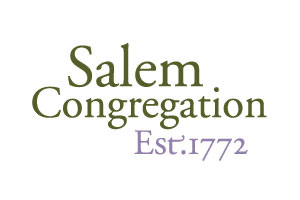The Salem Moravian Graveyard ‘God’s Acre’
The Moravian Graveyard is still known fondly by the old Germanic name of “God’s Acre” (Gottesacker). This burial ground is characterized by its simplicity and uniformity. As the name implies, this is a field where the bodies are “sown as perishable seed” to await the day when they will be raised in an “imperishable form.”
Here the departed are buried chronologically, in the order in which they are “called home to be with the Lord.”
Here are no statues or monuments to distinguish the graves of the rich from those of the poor. The recumbent stones remind us of the equality of the dead in God’s sight.
The visitor will soon note that the men, women, and children are buried separately. This is a continuation of the “Choir System” introduced in Herrnhut, Saxony by Count Zinzendorf, the renewer of the Moravian Church. The congregation was divided into groups according to age, sex, and marital status so that each individual might be cared for spiritually according to their differing needs. At worship the “choirs” also sat together in the church, the Brethren and boys on one side, the Sisters and girls on the other. When death came, then, the departed were buried, not in earthly families, but as they had been seated in the church, Brethren on the one side, Sisters on the other, the choirs together, continuing the form of the congregation at worship.
God’s Acre is still used by the Salem Congregation, comprised of thirteen of the Moravian Churches within the city of Winston-Salem. The dead are still buried according to the “choir system.”
On the Saturday before Easter the members of the Salem Congregation churches decorate the graves, so that each grave has flowers on it and the graveyard becomes like a large garden where the famous Easter Sunrise Service is held, continuing a tradition begun in 1735 in Herrnhut and first observed here in 1772.
On Easter morning the Congregation comes here as the “Church Militant” to affirm amid the grave of the “Church Triumphant” their faith in the “Risen Lord.”
For more info you can view this google earth map of the Graveyard with highlights.
You can search for graves in our database.

